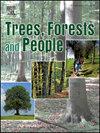木材可追溯性,确定打击非洲非法采伐的有效方法:综述
IF 2.7
Q1 FORESTRY
引用次数: 0
摘要
非法采伐是森林砍伐和生物多样性丧失的主要原因。因此,有效解决非法采伐问题势在必行,尤其是在非洲,因为非洲是最容易受到森林砍伐影响的地区,而且经认证的森林和可追溯系统较少。木材可追溯性包括跟踪和监测物种从森林到最终用途的整个过程,旨在支持低影响采伐和保护森林生物多样性。木材追踪可在采伐前或采伐过程中有意识地从森林中的树木开始规划(前瞻性方法);也可用于验证或确定市场上发现的木材的地理来源(回顾性方法)。在 scopus 文献检索的基础上,我们收集了世界范围内有关木材可追溯性的现有文献,以确定非洲正在实施的方法以及有助于有效打击非洲大陆非法砍伐行为的方法。全球范围内使用最多且效果显著的可追溯性方法包括木材解剖特征、DNA 方法、森林立法和认证、木板表面标记、QR 码、RFID、近红外光谱、区块链和稳定同位素比值。基于非洲森林的现状,即森林认证率低和木材可追溯性低(在全球实施的 24 种木材可追溯性方法中,非洲平均只调查了 5 种),我们提出了一套木材可追溯性方法(多种方法的组合),其中包括两种来自世界各地的回顾性或前瞻性方法,以当地森林立法为框架,并考虑到各国的社会经济条件。这套方法将通过一个安全的综合在线平台来实施,该平台由相关政策支持,并由指定的主管机构进行监督。建议将这套方法纳入刑法。这将有助于保护非洲森林,改善其生态状况,支持可持续森林管理。本文章由计算机程序翻译,如有差异,请以英文原文为准。
Timber traceability, determining effective methods to combat illegal logging in Africa: A review
Illegal logging is a leading cause of deforestation and biodiversity loss. Effectively addressing illegal logging is therefore imperative, especially in the African context, which represents the most vulnerable area to deforestation and has fewer certified forests and traceability systems. Timber traceability involves tracking and monitoring species from the forest to their final use, aiming to support low-impact logging and the protection of forest biodiversity. Wood tracking can be planned intentionally from the tree in the forest, either before or during harvesting (prospective method); or it can be used to verify or determine the geographic origin of timber found on the market (retrospective method). Based on a bibliographic search in scopus, the existing literature on timber traceability worldwide was collected to identify those that are being implemented in Africa and those that could contribute to effectively combatting illegal logging in the continent. The most used traceability methods worldwide with useful results are anatomical wood characteristics, DNA methods, forest legislation and certification, marked wooden board surfaces, QR codes, RFID, NIRS, Blockchain and stable isotope ratios.
Based on the current situation of African forests, viz. low forest certification rates and low wood traceability (in Africa, on average 5 wood traceability methods have been investigated, of the 24 implemented globally), we propose a wood traceability package (a combination of methods) that includes two retrospective or prospective methods from around the world framed by local forest legislation and considering the socio-economic conditions of the countries. The package will be implemented through a secure integrated online platform supported by policies and monitored by designated competent services. This recommended combination of methods should be enshrined in criminal law. This would help protect African forests, improve their ecological status, and support sustainable forest management.
求助全文
通过发布文献求助,成功后即可免费获取论文全文。
去求助
来源期刊

Trees, Forests and People
Economics, Econometrics and Finance-Economics, Econometrics and Finance (miscellaneous)
CiteScore
4.30
自引率
7.40%
发文量
172
审稿时长
56 days
 求助内容:
求助内容: 应助结果提醒方式:
应助结果提醒方式:


